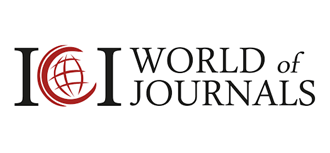Mortuary Tourism and Cultural Memory in the Region of Arica and Parinacota -Chile
Monica Navarrete Alvarez *, Jorge Bernal Peralta and Jorge Arias
Universidad de Tarapacá, Cardenal Caro 348, Saucache, Arica, Chile
Submission: October 02, 2024; Published: October 10,2024
*Corresponding author: Monica Navarrete Alvarez, Universidad de Tarapacá, Cardenal Caro 348, Saucache, Arica, Chile
How to cite this article: Monica Navarrete Alvarez *, Jorge Bernal Peralta and Jorge Arias. Mortuary Tourism and Cultural Memory in the Region of Arica and Parinacota -Chile. Glob J Tourism Leisure & hosp manag. 2024; 2(2): 555584. DOI:10.19080/GJTLH.2024.02.555584.
Mini Review
The premiere of COCO in 2017 was not only Saucachea cinematographic hit for its multiple international awards, but it also opened a window to the world on one of the most profound and colorful traditions of Mexico: the day of the Dead. Through a moving story about family, ancestors and the afterlife, COCO managed to capture the essence of a celebration that transcends death itself, inviting spectators to reflect on their roots. This representation highlights how death can be understood as an extension of life and as an event that honors familiar and cultural history [1]. In many cultures, one way to honor their deceased loved ones is through visits to cemeteries or funeral sites that are transformed into spaces of memory and cultural significance [2], González, 2017. In this way, these places function as a link between the living and the dead, similar to the representation of Día de los Muertos in COCO.
Although cemeteries are not originally conceived as Sites Tourist, their cultural and architectonic value has won recognition promoting the tourism mortuary. This phenomenon, also known as necrotourism, is presented under different denominations, such as “Tanaturismo” [3] or “Tourism of sadness” [4] and refers to the interest in visiting cementeries, tombs and sites. related to death. This type of tourism has evolved, passing from being a spiritual ritual to a cultural and mortuary historical activity. The motivations that drive tourists are varied. According to [5], many Travelers looking for reflect on disasters and historical events, while [6] and [7] argue that necrotourism provides an opportunity for travelers to find meaning in their own lives the “Tanaturismo” ough Confronting Death, as well as an explanation of how death and its rituals, have become products or services “Tanaturismo” in the actual society.
An example of this practice is found in the Cementerio General de Arica in Chile, which houses a rich diversity of characters that have left a significant mark in the history of the city. Among them are immigrants Europeans who, in the mid-nineteenth century, transformed Arica into a center of cultural and commercial exchange. Domingo Pescetto, the last mayor during the Peruvian Republic, symbolizes the influence of Italian immigrants in local management, where some colonies contributed significantly to the development of the city of Arica, while in the present day, their descendants continue to manage businesses and companies. being Renotions as part of the most traditional and oldest families in the city [8]. The mausoleums of Italian families Renotions such as the Canepa and Focaccia, together with the mutual society “House of Italians”, are testimony to the Italian legacy in the region, highlighting the importance of collective memory. Likewise, Asian immigrants, including Jews, Chinese and Japanese, also played a crucial role in the history of Arica. Los judíos, who arrived during the Second World War, established the Society Israeli Teodoro Hertzl, contributing to the social and economic life of the city. For their part, the Chinese, often forced to labor, faced harsh hardships. conditions, but they managed to stabilize themselves in the community, being recorded in the history of the city. It also highlights the tragic figure of Fortunato Soto, the first Shot registered in regional history, who symbolizes the social tensions of his time and the stru Societyggle for justice, as mentioned by Daily La Defense: “in his appearing grave, from time to time, flowers to mitigate his soul in pain”[9]. Finally, la tomb by Carmen Omar Guryra, adorned with flowers and care, reflects the respect and admiration of the community towards women in the history of Arica.
This is it context, mortuary tourism in the Region of Arica and Parinacota acquires special relevance due to the rich funerary history of the ancient cultures that inhabited the region. The San Miguel Museum of Azapa, founded in 1942, has been linked to the investigation of burials and mortuary practices of the Hammock culture, whose artificial mummification techniques date back to 7,000 years ago, much before the Egyptians. These Practice Reflect Deep Spiritual Beliefs about Life after Death [10] suggests que estas Practice may have arisen from spiritual needs, believing that preserving the body was essential for a successful transition to the afterlife, a concept that resonates with other cultures that practiced mumification, such as the Egyptians. The Chinchorromumias, classified as black, red, and covered with mud patina, represent an evolution in mummification techniques, where bodies are disarticulated and reassembled with materials such as sea lion skin, clay, and sticks [10].
In addition, other places such as the site of Playa Miller, the Maestranza Chinchorro and the Colón 10 Museum, as well as the historic “Morro de Arica”, are examples of ancestral mortuary tourism spaces in Arica. The site of Playa Miller, located on the south coast of Arica, it encompasses a narrow marine terrace that includes a shell grove and an extensive cemetery (Playa Miller-8) dated between 5,700 and 4,000 BC (Arriaza et al., 2012; Rivera, 1975). Excavations carried out by [11] revealed an aboriginal cemetery on El Laucho beach, where circular graves covered with reeds and mats containing funerary bundles in Position fetal and offerings of basketry and objects of domestic use were found. On the other hand, the site of Maestranza Chinchorro, discovered in 1997 during an accidental excavation, housed three collective burials in an irregular state of conservation due to the intervention of trains [12,13]. The Colón 10 and El Morro site, which houses a pre-Columbian cemetery, reveals the ancestral history of the Chinchorro culture and was discovered during 2004 soil mechanics studies, containing Mumias from the last Chinchorro cultural phase [13]. Likewise, the burials in other areas of the region, such as those in the Aldea de San Lorenzo, highlight the importance of these sacred places in the daily life of the old towns. Mortuary ceremonies were essentials for community life, and these sites have been considered as “waka”, sacred places where the living and the dead coexisted symbolically [1].
To finalize, mortuary tourism has evolved over the years and, in places like Arica and Parinacota, not only preserves the memory of ancient cultures, but also offers an opportunity to reflect on our own connection with the past. A as necrotourism continues in expansion, it is probable that more people discover the value of these sites as fundamental elements of their cultural and personal heritage, finding in them a source of knowledge and emotional connection.
References
- Muñoz I (2017) The Qhapaq Ñan in the highlands of Arica: backbone of the late pre-Hispanic settlement, northern Chile. Bulletin of the Chilean Museum of Pre-Columbian Art 22(2): 115-132.
- Fenoglio C (2012) Cemetery Documents. Identification and value. International University of Andalusia.
- Stone P (2006) A dark tourism spectrum: Towards a typology of death and macabre related tourist sites, attractions and exhibitions. Tourism: An Interdisciplinary International Journal 54(2): 145-160.
- Lennon J, Foley M (2000) Dark tourism? The attraction of death and disaster. International Journal of Tourism Research 4(6): 485-486.
- Stone P, Sharpley R (2008) Consuming dark tourism: A thanatological perspective. Annals of Tourism Research 35(2): 574-595.
- Stone P (2013) Dark tourism scholarship: a critical review. International Journal of Culture, Tourism and Hospitality Research 7(3): 307-318.
- Krippendorff J (1986) The new tourist- Turning point for leisure and travel. Tourism Management 7(2): 131-135.
- Díaz A, Ruz Ry, Sánchez E (2018) Italian presence in the far north of Chile. Immigration and Peruvian-Chilean Border Society (ARICA 1880-1930) Interciencia 43(11): 751-757.
- Diario La Defensa (1961) In his apparante grave, from time to time, flowers to mitigate his soul in sorrow, p. 5.
- Arriaza B (2022) Chinchorro Culture: The Oldest Artificial Mumias in the World (M. Oñate, Trans.). University Press of Chile.
- Focacci L (1974) Excavaciones en el sitio Playa Miller. Arica (Chile). Chungará (3): 23-74.
- Belmonte E, Bastías E, Gómez M, Mujica Ay, Montenegro G (2001) Taxonomic determination of wood fragments from the funerary context of the Chinchorro culture. Chungará (Arica) 33(1): 145-154.
- Standen V, Arriaza B, Santoro CY, Santos M (2014) The Funerary Practice at the Maestranza Chinchorro Site and the Coastal Settlement During the Middle Archaic in the Far North of Chile. Latin American Antiquity 25(3): 300-321.






























